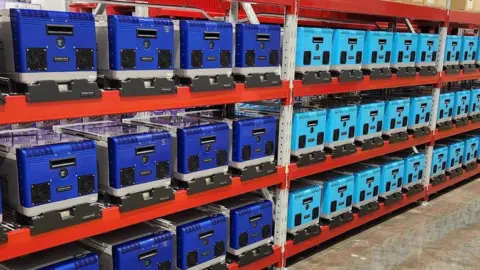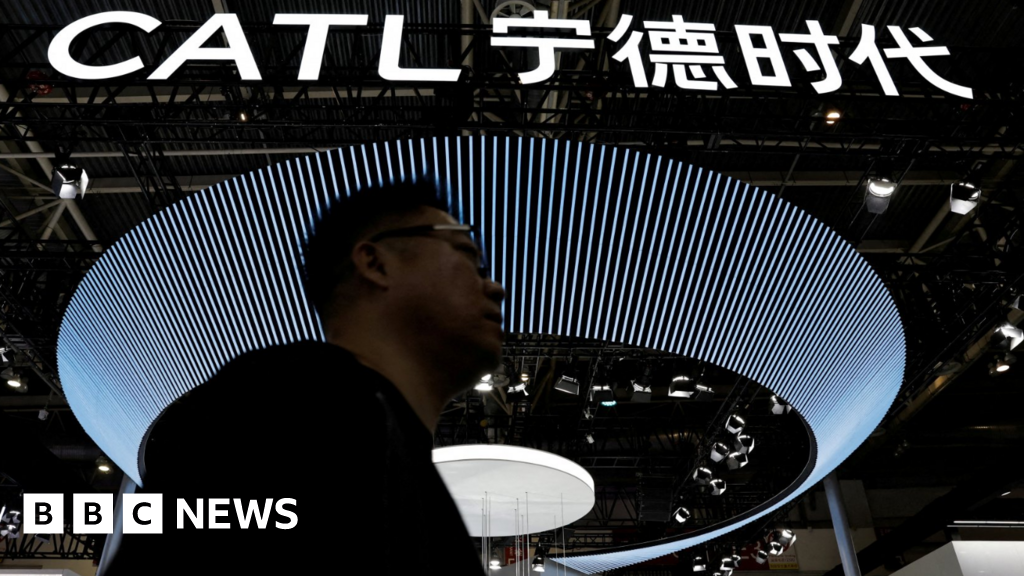ARTICLE AD BOX
Christine Ro
Technology Reporter

 Getty Images
Getty Images
Climate change is making staying cool more challenging
Sneha Sachar, who spent half her life in Delhi and now lives in California, is used to heat. But her hometown feels much hotter now than when she was growing up.
Even commuting by car is so uncomfortable in certain months, says Ms Sachar, who works for the Clean Cooling Collaborative, a philanthropic initiative focused on improved cooling.
Rising temperatures are even worse for outdoor workers. "This is really impacting the ability of people to continue to earn their livelihoods," Ms Sachar says.
She says that there are a number of low-tech ways to keep buildings cool, such as designing for air flow.
For outdoor workers, even a 20-minute break from the heat and humidity, such as in well-designed cooling stations, can make a difference.
But beyond this, active cooling will become increasingly critical as temperatures continue to rise due to climate change.
Morgan Stanley is predicting that the annual growth rate of the cooling market, already worth $235bn (£180bn) a year, could more than double by 2030.

 Getty Images
Getty Images
Traditional cooling uses refrigerants which can leak
Yet existing cooling devices have serious drawbacks. One issue the refrigerant - the fluid that transitions back and forth from liquid to gas, in a process that transfers heat.
It's common for them to leak from standard systems, harming both efficiency and potentially health.
The refrigerants typically used in cooling today are hydrofluorocarbons (HFCs), a group of synthetic gases with high global warming potential. HFCs are much more potent than carbon dioxide.
So one option is to replace the refrigerants with more climate-friendly versions. But the candidates with the lower global warming potential, also have problems.
For instance, propane is highly flammable. Ammonia is toxic. Carbon dioxide works at high pressures, requiring specialised equipment.
But as many places phase down HFCs, alternative refrigerants will remain important.
Ms Sachar says that we still need refrigerants because for home cooling, "A/Cs as we know them today will continue to be the solution, at least for the next decade or so".

 Tati van Thiel Photography
Tati van Thiel Photography
Lindsay Rasmussen says cooling without refrigerants will be "revolutionary"
In the longer term, some scientists are looking toward cooling devices that don't need liquid refrigerants at all.
Lindsay Rasmussen, who manages building and land-use projects at the energy non-profit RMI, calls these "revolutionary technologies".
A major set of revolutionary cooling tech is solid-state cooling. This uses solid materials and some sort of additional force to induce temperature changes. That extra force could be pressure, voltage, magnets or mechanical stress.
Ms Rasmussen says that solid-state devices can go further than incremental improvements because "not only do they eliminate those super-polluting refrigerants, but they can also offer improved efficiency to the systems".
RMI has identified between 10 and 20 start-ups working on early versions of solid-state cooling devices.
One of those startups is the German company Magnotherm, which uses magnets. Certain materials change temperature when exposed to magnetic fields.
"With our technology, it's inherently safe because it's not toxic, it's a metal, and we operate at very low pressures," according to Timur Sirman, the CEO and cofounder of Magnotherm.
The idea of magnetocaloric cooling has been around for years, but commercialising it is relatively new. Magnotherm has built about 40 beverage coolers, and about five refrigerators, in what is so far a manual and in-house process.
The permanent magnets are the most expensive part of the technology, Mr Sirman reports. "But it never breaks, so we can always reuse this quite cost-intensive component."
The company is seeking out alternative sources of magnetic fields, as well as optimising materials, as they aim to dramatically increase the cooling capacity of their devices.
Mr Sirman believes that if you account for the efficiency and health issues of refrigerants, like leakages, Magnotherm products can compete on price. "We are not targeting customers who are only looking at initial cost."
He acknowledges that for now the company's beverage coolers are quite pricey. Their customers tend to be early adopters of new technologies.

 Phonic
Phonic
Phonic's cooling systems are used to chill food without refrigerants
Another technology under development is thermoelectric cooling.
This involves moving heat between two sides of a device. With the application of electrical energy, heat is transferred in the direction of the current.
A notable thermoelectric start-up is Phononic, which is based in the US and has an additional manufacturing facility in Thailand.
Millions of Phononic cooling devices are now in use, including in data centres, supermarkets and other buildings.
Their cooling devices are built in a similar way to computer chips, using semiconducting materials to transfer the heat.
"Our chips are really thin, really small, but they get really cold. They consume a small amount of electricity in generating that coldness, but they pack one hell of a punch," says Tony Atti, the CEO of Phononic.
He says that, to work at their best, traditional fridges need to be run all the time.
But thermoelectric devices can be easily switched on off. This helps to reduce the costs, energy use and space requirements.
"We like to present the coolness on demand where you need it," says Mr Atti.
Another advantage is that thermoelectric cooling can operate silently. "That's because there's zero moving parts," Ms Rasmussen explains. "The heat is occurring because of the reaction in the material level."
In contrast, standard vapour compression systems contain pumps, condensers and expanders for refrigerant, which all generate much of the noise.
A different type of solid-state cooling is elastocaloric cooling. This achieves temperature changes through mechanical stress to elastocaloric materials, which can cool down or heat up with the application of stress.
Researchers in four European countries are collaborating on SMACool, an elastocaloric air conditioner that uses metal tubes made from specific metallic alloys.
At the moment, elastocaloric prototypes have much lower cooling capacity than commercial air conditioning. And the maximum possible efficiency of SMACool is still lower than that of conventional air conditioning, although the aim is to beat the energy efficiency of A/C.
However, progress is continuing. A team led by Hong Kong researchers recently created an A/C alternative that achieved a cooling power of 1,284W—the first time an elastocaloric device surpassed the 1,000W mark. One innovation was using graphene nanofluid rather than distilled water to transfer the heat.
Overall, Ms Rasmussen says, solid-state devices are generally not yet as powerful as conventional vapour-compression air conditioning. But she expects performance improvements over time.
She also expects improvements in affordability. So far solid-state cooling has mainly been deployed in wealthy countries.
A key question, Ms Rasmussen says, is "Can these technologies scale up to where they could be affordable for those who need it the most and where the greatest demand for cooling is coming from?"
More Technology of Business

 5 hours ago
3
5 hours ago
3








 English (US) ·
English (US) ·